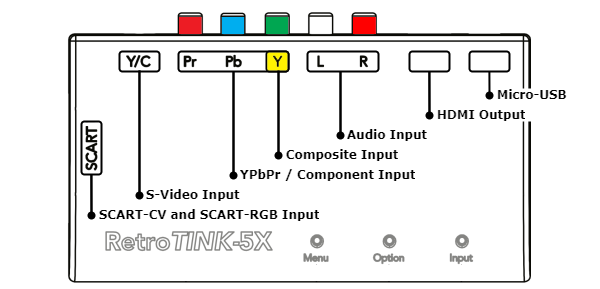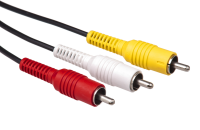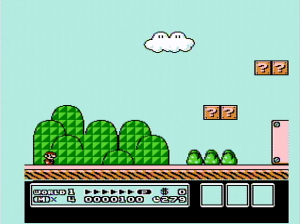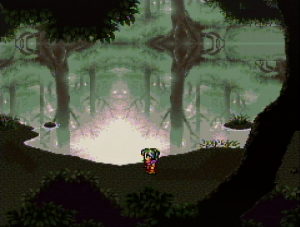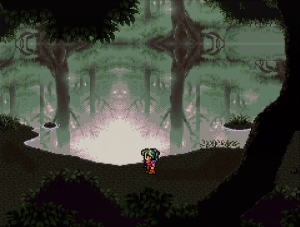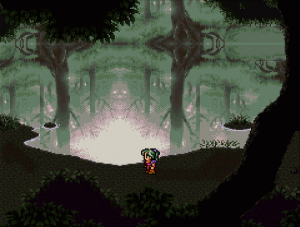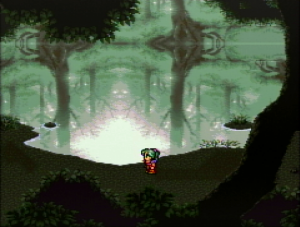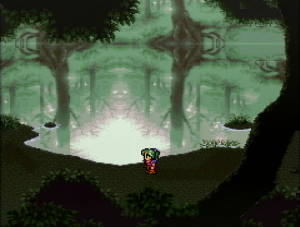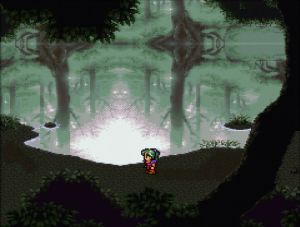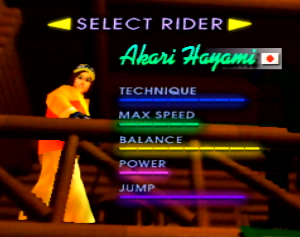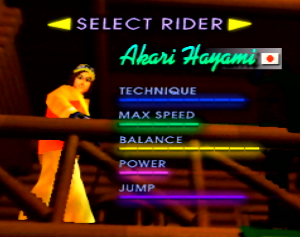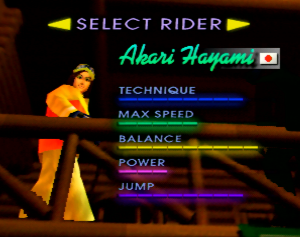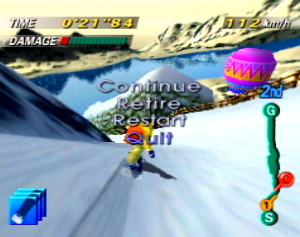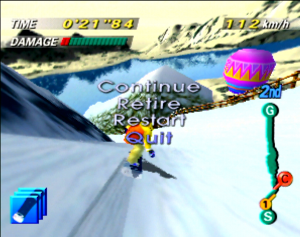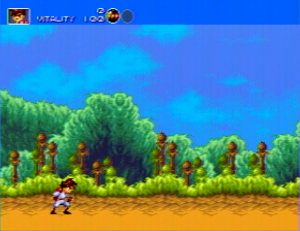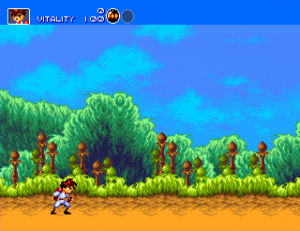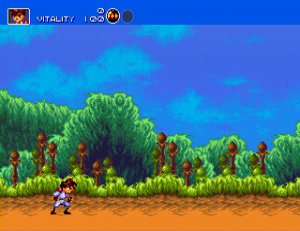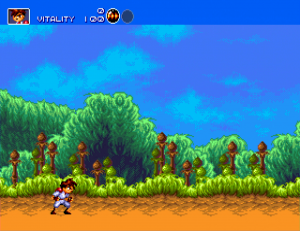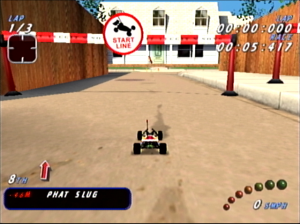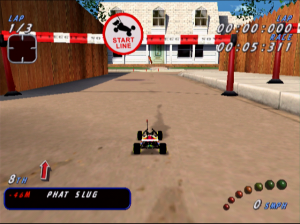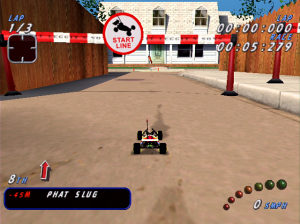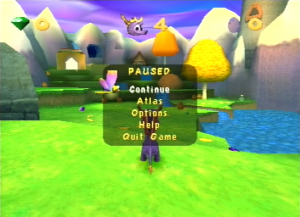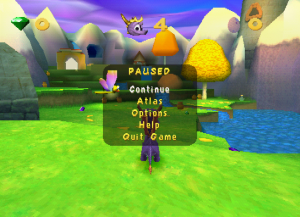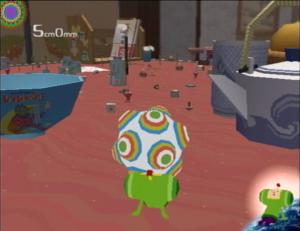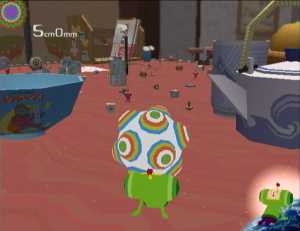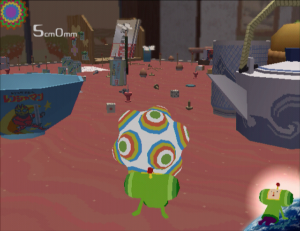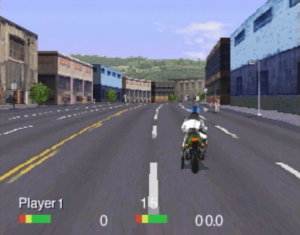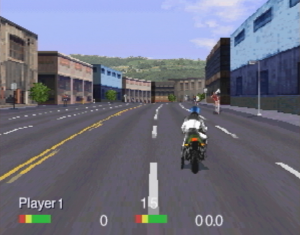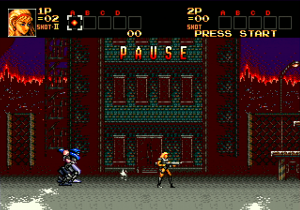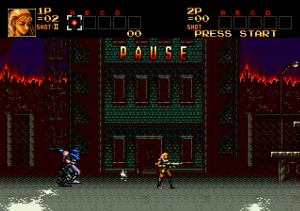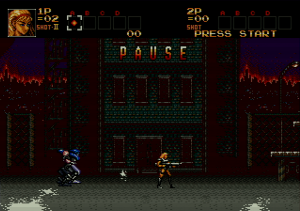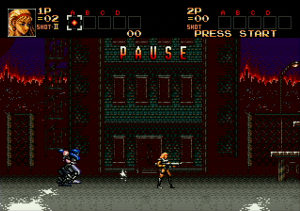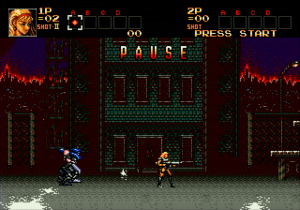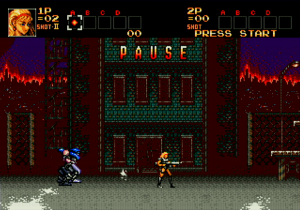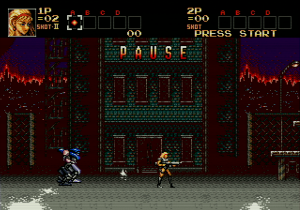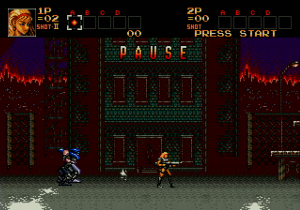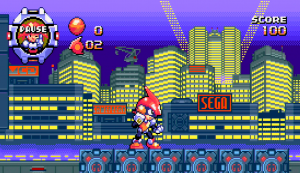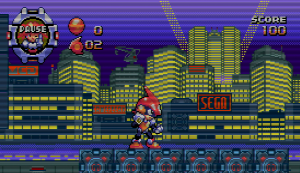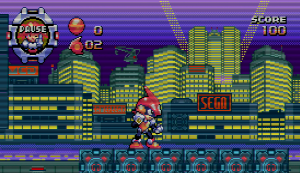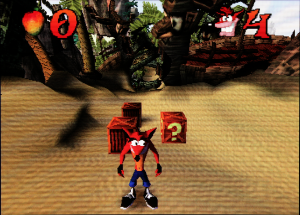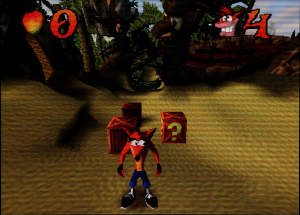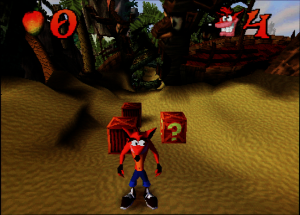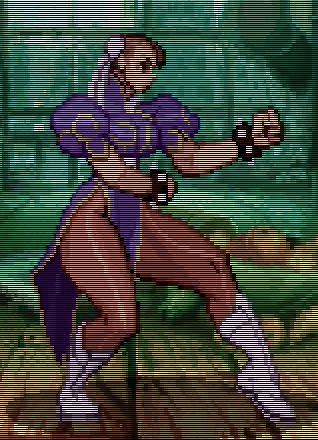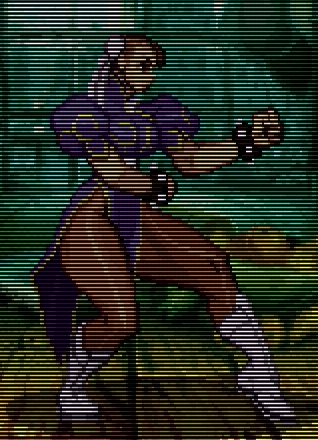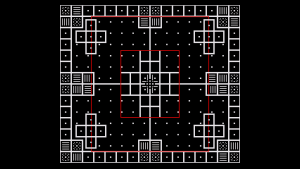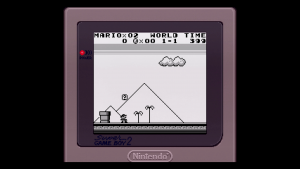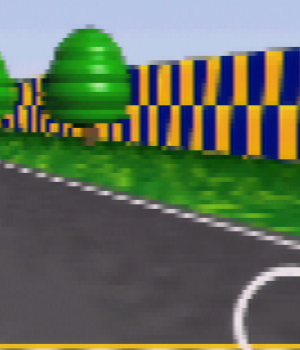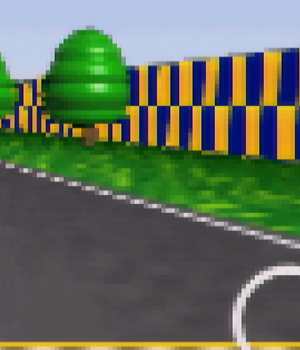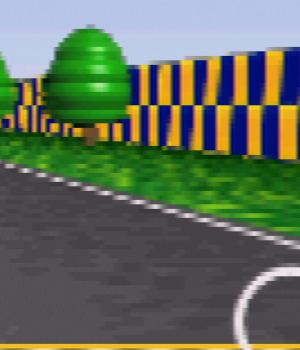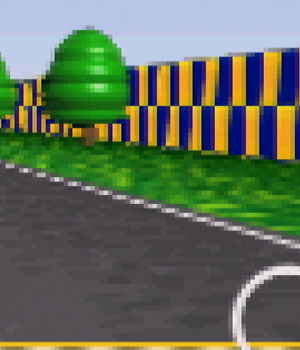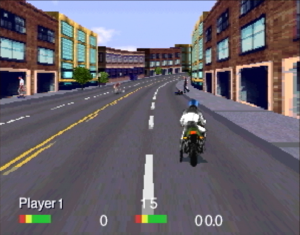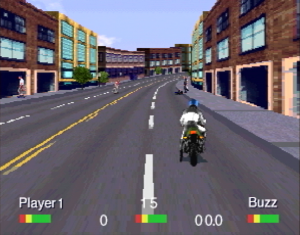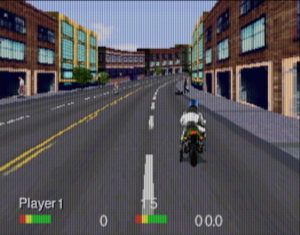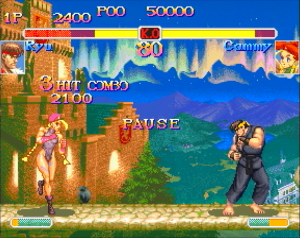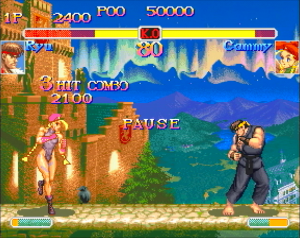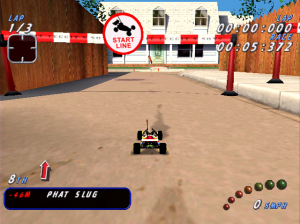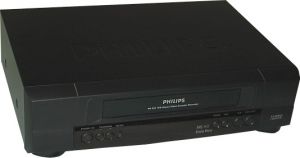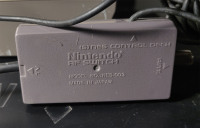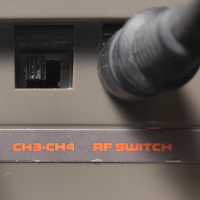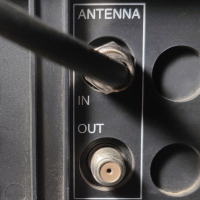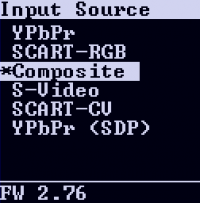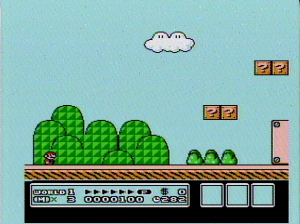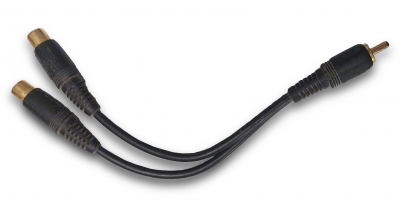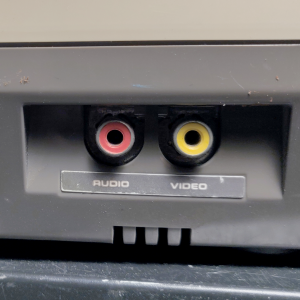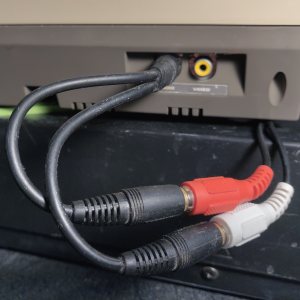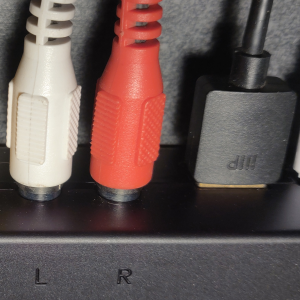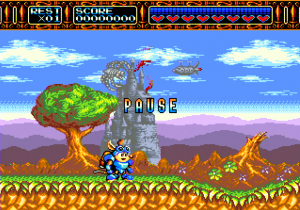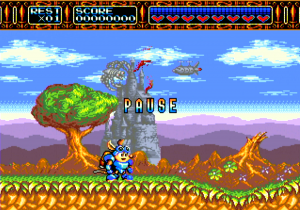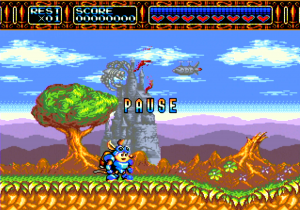AV:RetroTINK-5X Pro
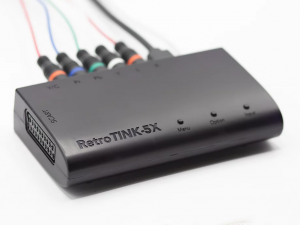
The RetroTINK-5X Pro is an advanced video upscaler designed by Mike Chi. Released on April 29th 2021, it is the latest offering from the RetroTink line of graphics upscalers and line-doublers.
The RetroTINK community has united to create this wiki document as a resource for users looking to better understand the TINK-5X Pro, as well as the growing complexities and capabilities that have been added with ongoing firmware updates. Because of this, The RetroTINK-5X Pro Wiki assumes you are on the latest firmware version unless otherwise specified, and it is highly recommended that you upgrade your firmware to the latest public release. Please see the Upgrading Firmware section for instructions and more info.
How to Use the RetroTINK-5X Pro - A Beginner’s Guide
The RetroTINK-5X Pro is a product designed to solve the problem of using retro video game consoles with modern flat panel displays. If you’ve arrived at this guide, you’re probably aware of some problems when trying to play older video game systems on a newer TV:
- HDMI vs Analog - In many situations, the cables that came with your game system will not be compatible with the modern digital HDMI inputs on your TV. One of the main features of the RetroTINK-5X Pro is to convert these signals into an HDMI format your modern display can understand.
- Correct Image Processing - In the cases that your display does have the correct hookups to connect your console, there’s still a good chance that the resulting output will be blurry and distorted and laggy. This is because most displays are designed with Movie or TV Show content in mind, and the video processing typically used to handle that isn’t a good fit for retro consoles. Features like minimal and consistent latency, integer scaling and proper handling of 240p are almost always missing when using a flat panel’s included analog inputs.
- Input Lag - Because of the image processing described above, many TVs will introduce input lag (aka latency), which is the delay between a controller input and when the action actually occurs on the screen for the player to see. Having too much lag in a setup can make gameplay feel sluggish, unresponsive, and in extreme cases unplayable. In the context of gaming, input lag can also introduced by upscalers and splitters, the game console, and even the game itself. This is why enthusiasts seek devices (controllers, displays, upscalers, etc.) that minimize latency. While every electronic device takes a little bit of time to do its job, devices that do it as quickly as possible are often referred to as "low lag" or "virtually no lag".
The RetroTINK-5X Pro by design is an extremely low lag device, and with includes advanced modes to operate even more quickly (see Triple Buffer vs Frame Lock And Gen Lock and 1080p (Min-Lag) for more info). When seeking products that are low latency, it's helpful to know that anything less than a frame in a 60 FPS signal is colloquially considered very low lag. Often milliseconds (ms) are used to measure lag. One frame of a standard 60 FPS signal is equal to approximately 16.7ms.
Just Play the Damn Game™
Thanks to Mike Chi’s research and engineering, the RetroTINK-5X Pro is one of the best products on the market specifically built to address the peculiarities of retro video game analog signals. While a complex engine of tweakability lies under the hood for enthusiasts, the RetroTINK-5X Pro prioritizes ease of use so anyone can get their console up in running.
Here are the basic steps anyone can take to get a great experience with their retro video game console:
- Connect the RetroTINK-5X Pro to your display using an HDMI cable.
- Connect your video game console’s video and audio to the RetroTINK-5X Pro using a supported cable.
- Power on the RetroTINK-5X Pro using the included micro USB cable - many TVs will have a USB hookup on the back or side that will work as a power source.
- Using the included remote, select the appropriate input from the "Input Source" menu (this choice depends on the cable you are using to connect your video game console to the RetroTINK-5X Pro, see the Supported Inputs section for more information).
- Using the included remote, select the appropriate output from the "Output Res." menu. For most TVs, 1080p (Fill) is a great “all around” choice.
And that’s it! You don’t have to be an A/V engineer to get remarkable results from the RetroTINK-5X Pro, all the hard work is done behind the scenes. Understanding jargon such as automatic phase detection, polyphase scaling or motion adaptive deinterlacing isn’t required for you to gain the benefits and enjoy your retro consoles on a flat panel with great results.
Supported Inputs
The TINK-5X supports nearly every major analog video format used by retro video game consoles. Please see the Inputs Source and Determining Video Modes sections for more information about supported resolutions and modes.
When selecting a cable, note that the original manufacturer's cables (Nintendo, Sega, Sony, etc.) are typically high quality options. When available, trusted third-party cables that meet or exceed the quality of OEM cables are noted in the following sections.
Composite
SCART-CV
S-Video
YPbPr / Component
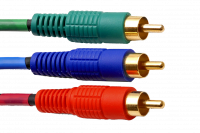
|
YPbPr or "Component" video is a high quality analog standard that uses three RCA cables to carry separate parts of the video signal (brightness+sync and two color difference signals). Component video was featured on consoles such as PlayStation 2, PlayStation 3, Xbox, Wii, and Gamecube (model # DOL-001 only).
To use YPbPr with the TINK-5X, insert the Y RCA plug (typically colored green) into the Tink 5x’s “Y” input, insert the Pb RCA plug (typically colored blue) into the Tink 5x’s “Pb” input, and insert the "Pr" RCA plug (typically colored red) into the Tink 5x’s “Pr” input. For audio, insert your left and right audio into the “L” and “R” inputs respectively. Then, select YPbPr or YPbPr (SDP) for from the Tink 5x’s Input Source menu; the front LED will turn white. Review the Input Source section of the guide for more information concerning differences between YPbPr and YPbPr (SDP) modes. Recommended YPbPr / Component Cables |
SCART-RGB
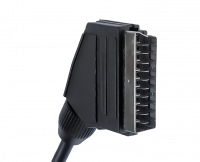
|
The TINK-5x supports RGB input through the SCART connector input. SCART was not widely used in the United States but was common in Europe, and video game consoles often featured RGB video and audio connections over SCART. To find out if your console supports RGB over SCART, first check the Video Modes Table. Some consoles support RGB only after mods have been installed (such as the Nintendo 64). Other resources for RGB information can be found by choosing your console at the Main Page and seeing if any RGB mods are listed. Additionally, check out RetroRGB's website for detailed information on getting the highest quality RGB picture out of your video game console.
CompatibilityThe TINK-5x is designed to accept RGB over SCART in the "EuroSCART" variant and NOT JP21. Though JP21 uses the same style connector, it is not compatible with the TINK-5x and may damage your hardware. SyncThe TINK-5x accepts sync on luma, sync on composite and c-sync RGB over SCART configurations. Check with your SCART cable manufacturer to ensure compatibility with the RetroTINK-5x Pro. Note that TTL-level sync is not supported by the TINK-5x and may damage your hardware. Note that RGsB (such as the PlayStation 2's RGB output) is not supported. 31 kHz SignalsThe TINK-5x can accept 31 kHz RGB signals with the use of a compatible sync combiner device. This allows for "VGA" input from compatible sources and resolutions. Sync combiner products include the HD15-2-SCART and VGA2SCART. A common implementation of this option is accepting Dreamcast "VGA" output using a compatible VGA cable. Other options include building a sync combiner directly into the SCART cable, such as the Retro Access Dreamcast 15khz/31khz SCART cable. More information about these products as they pertain to the Dreamcast can be found here. Recommended SCART-RGB Cables |
Upgrading Firmware
Since debuting in May, 2021, the RetroTINK-5X Pro has received vast upgrades to its features and functionality, as well as numerous bugfixes and tweaks. Mike Chi originally provided an excellent manual that detailed the stock 1.0 firmware features thoroughly. However, with each iteration, that manual fell out of step and does not cover many of the options found on the RetroTINK-5X Pro today.
The RetroTINK community has united to create this wiki document as a resource for users looking to better understand the TINK-5X Pro, as well as the growing complexities and capabilities that have been added with ongoing firmware updates. Because of this,
The RetroTINK-5X Pro Wiki assumes you are on the latest firmware version unless otherwise specified, and it is highly recommended that you upgrade your firmware to the latest public release.
The instructions below covers how to update a RetroTINK-5X on a Windows PC, which can also be found on the Official RetroTINK Website.
- Download and install the FTDI D2XX Drivers.
- Download the RetroTINK Firmware Tool. Install it by unzipping and running RT_FWUP.
- Download the firmware you need via the RetroTINK-5X firmware page.
- Hold down the Power button on the RetroTINK-5X, while plugging it into your computer via the USB cable normally used for power. When you do this, the LED on the 5X should be RED, indicating that it is in update mode.
- Run the RetroTINK Firmware Tool. The installer will have left a shortcut on your desktop.
- In the Firmware Tool, hit "Search": You should see "FT232R USB UART" appear in the box, indicating that the tool has detected the RetroTINK-5X.
- Hit "Load HEX" and select the .hex firmware file you downloaded and unzipped in Step 3.
- Hit the "Flash" button to update the 5X.
- During the update, the Firmware Tool may freeze. This is completely normal! The tool is still running as it should, and it will complete the firmware update after a minute or two. Be patient!
- If you accidentally interrupt the process, start over from Step 4.
- The RetroTINK-5X should reboot and be ready to use.
As of Firmware Update 2.00, the Menu and Option buttons on the front of the unit no longer have functionality paired to them. The Input button will still cycle through the various input sources.
For more help, Bob from RetroRGB has created a video tutorial giving step-by-step details on how to perform a firmware upgrade on the full RetroTINK line of products.
Notable New Features
Below is a list of the most notable features that have been added to the RetroTINK-5X through various firmware updates (for a full list, visit the TINK-5X firmware page). It's worth noting that none of these remove the plug-and-play nature of a stock 5X.
- 1080p (Min-Lag) Output - When this output mode is combined with Frame Lock V-Sync, the 5X achieves ~1ms of lag for 240p, 480i and 480p sources.
- Blue Only - Displays only blue color values, similar to the "Blue Button" on PVMs used for picture calibration.
- HDR Injection - Allows the output to be flagged as either HDR10 or HLG, effectively adding HDR functionality. This can result in more accurate picture luminance when using the CRT filters, although the Gamma and Color Boost may need to be adjusted.
- On-Screen Display options - Allows you to change the size of the 5X's menus, as well as the background color when no signal is detected through the selected input.
- Advanced Resolutions - Hidden by default, accessing this enables 1440p, 2560x1440p, 4K24 and 1536p ("iPad") output resolutions. These modes are considered experimental and are provided without support or guarantees.
- Profiles - It's now possible to save your settings using 10 Profile slots. The Load Profile menu also allows you to load the Default profile if you wish to start over from scratch. You can also choose to load up a specific Profile on startup.
- Visible Cropping Fields - Magenta bars are now displayed when using the cropping controls to help visualize where the crop zones are on the output.
- Scaling and 4:3 Ruler - It's now possible to increase the horizontal / vertical size and positioning of the image, even with optimal sampling. When using an H. Sampling preset that isn't Generic 4:3 / 16:9, a number in the bottom-right corner of the menu displays if your V Size setting matches the pixel aspect ratio of the H. Sampling preset you chose. A reading of 1.00 means a match ("dialed in" 4:3 AR).
- Bob Offset - Offsets the Bob Deinterlacer's movement to either exaggerate or even negate the bobbing effect. This is useful for 240p games that were poorly ported to run at 480i, such as Megaman Anniversary Collection on PlayStation 2.
- Bob Scanlines - Adds interlacing scanlines to interlaced content, which enables an appearance closer to 480i on a CRT.
- 360p Optimal Timing - This allows the 5X to correctly upscale video from the Game Boy Interface, a custom firmware for the Nintendo GameCube's Game Boy Player add-on. This feature only appears when the 5X detects 360p video.
- Scanline and CRT Effect Options and Improvements - This includes vertical masks that enable the appearance of consumer CRTs and arcade CRTs.
- Adjustable Post-Processing Profiles - The existing scanline profiles can now be further tweaked by the user, including the specific scanline beam and vertical mask, their strength, the Gamma and Color Boost, and more.
- Lock to 60hz - Locks the output to 60hz, useful for PAL users who switch between 50hz menus and 60hz games on a modded system and for unforgiving displays and capture devices.
- Status - Displays technical information regarding the signal currently being displayed.
- Remote Button Holds - When adjusting a numerical value, holding down an arrow button now results in a continuous input, removing the need to constantly tap the button.
- Default Profile Shortcut - Press the Back button on the remote 6 times rapidly to load the Default Profile.
Troubleshooting / FAQ
There are many helpful users at the RetroTINK Discord community that can help answer most questions you might have, and help step you through troubleshooting steps if you are experiencing issues.
Here are some solutions to a few common issues:
Plug the RetroTINK-5X Pro into wall power using a dedicated USB power supply.
While in most cases it is okay to plug into your TV's USB port, some TV USB ports do not supply enough amperage and can cause the RetroTINK-5X Pro to run erratically (stuttering, audio distortion) or not at all. Using a dedicated power supply rated for at least 1 amp (1 A) is a simple way to check if this is the issue. Check your TV's documentation to ensure that the supplied USB port is offering at least 1 amp (1.0 A) of power, as the The RetroTINK-5X Pro is rated to draw around 800 mA (.8 A).
Try Different Cables
Some users have solved their issue swapping their HDMI cables and/or Micro USB cables. The 5X ships with a new, good quality Micro USB cable but it never hurts to try an alternate if you are experiencing issues.
Ensure your Display is 1080p Compatible
When powered on, the RetroTINK-5X Pro outputs 1080p video by default. If you are using an older TV, check your documentation that it can support 1080p. If you find that it does not, there are other video modes that the 5X can output. 720p would be the next lowest standard video mode, but you will have to navigate the selection without seeing the screen.
To Change Output Resolution Without A Working Picture:
1. Ensure your TV is turned on and set to the correct HDMI input, and that the RetroTINK-5X Pro is turned on and connected to that input with a tested, working HDMI cable.
2. Using the RetroTINK-5X Pro's remote, perform the following button presses:
If your RetroTINK-5X Pro is on a firmware before 2.0, simply pressing the "Three Lines" button on your remote to cycle output resolutions, making sure to give a couple seconds between presses for your TV to adjust, until you see a working picture.
| Switching to 720p Mode (Pre-2.0 Firmware) |
|---|
|
|
If your RetroTINK-5X Pro is at the latest firmware, here are the remote control steps to change video output to 720p:
| Switching to 720p Mode "Blind" (Latest Firmware) | ||||
|---|---|---|---|---|
Cable Comparisons
To view and compare these images, click on one to enlarge it, then use the arrow keys to jump to the next or previous image in the table.
| Nintendo Systems | ||||
|---|---|---|---|---|
| System | Composite | S-Video | RGB | Component |
| Nintendo Entertainment System (NES) | Unsupported | Unsupported | Unsupported | |
| SNES Example 1 - Voultar SNES Jr | ||||
| SNES Example 2 - Stock "2-Chip" (SNS-CPU-GPM-02) | ||||
| Nintendo 64 Examples #1 (Examples captured with NTSC N64 with Voultar's N64 RGB Kit installed) |
||||
| Nintendo 64 Examples #2 (Examples captured with NTSC N64 with Voultar's N64 RGB Kit installed) |
||||
| Sega Systems | ||||
|---|---|---|---|---|
| System | Composite | S-Video | RGB | Component |
| Sega Genesis (Stock / No Mods) |
Unsupported |
|||
| Sega Genesis Modded with Triple Bypass Mod (bypasses stock RGB amp) |
(3XBP Mod Disables Composite Output Support) |
Unsupported |
||
| Sega Dreamcast Examples | ||||
| PlayStation Systems | ||||
|---|---|---|---|---|
| System | Composite | S-Video | RGB | Component |
| PAL Sony PSone (Stock / No Mods) | Unsupported. PS1 games on a PS2 console do support component output. | |||
| PlayStation 2 Example 1 |
(Missing image for PS2 RGsB) |
|||
| Xbox Systems | |||||||||||||||||||||||||||||||||||||||||||||||||||||||||||||||||||||||||||||||||||||||||||||||||||||||||||||||||||||||||||||||||||||||||||||||||||||||||||||||||||||||||||||||||||||||||||||||||||||||||||||||||||||||||||||||||||||||||||||||||||||||||||||||||||||||||||||||||||||||||||||||||||||||||||||||||||||||||||||||||||||||||||||||||||||||||||||||||||||||||||||||||||||||||||||||||||||||||||||||||||||||||||||||||||||||||||||||||||||||||||||||||||||||||||||||||||||||||||||||||||||||||||||||||||||||||||||||||||||||||||||||||||||||||||||||||||||||||||||||||||||||||||||||||||||||||||||||||||||||||||||||||||||||||||||||||||||||||||||||||||||||||||||||||||||||||||||||||||||||||||||||||||||||||||||||||||||||||||||||||||||||||||||||||||||||||||||||||||||||||||||||||||||||||||||||||||||||||||||||||||||||||||||||||||||||||||||||||||||||||||||||||||||||||||||||||||||||||||||||||||||||||||||||||||||||||||||||||||||||||||||||||||||||||||||||||||||||||||||||||||||||||||||||||||||||||||||||||||||||
|---|---|---|---|---|---|---|---|---|---|---|---|---|---|---|---|---|---|---|---|---|---|---|---|---|---|---|---|---|---|---|---|---|---|---|---|---|---|---|---|---|---|---|---|---|---|---|---|---|---|---|---|---|---|---|---|---|---|---|---|---|---|---|---|---|---|---|---|---|---|---|---|---|---|---|---|---|---|---|---|---|---|---|---|---|---|---|---|---|---|---|---|---|---|---|---|---|---|---|---|---|---|---|---|---|---|---|---|---|---|---|---|---|---|---|---|---|---|---|---|---|---|---|---|---|---|---|---|---|---|---|---|---|---|---|---|---|---|---|---|---|---|---|---|---|---|---|---|---|---|---|---|---|---|---|---|---|---|---|---|---|---|---|---|---|---|---|---|---|---|---|---|---|---|---|---|---|---|---|---|---|---|---|---|---|---|---|---|---|---|---|---|---|---|---|---|---|---|---|---|---|---|---|---|---|---|---|---|---|---|---|---|---|---|---|---|---|---|---|---|---|---|---|---|---|---|---|---|---|---|---|---|---|---|---|---|---|---|---|---|---|---|---|---|---|---|---|---|---|---|---|---|---|---|---|---|---|---|---|---|---|---|---|---|---|---|---|---|---|---|---|---|---|---|---|---|---|---|---|---|---|---|---|---|---|---|---|---|---|---|---|---|---|---|---|---|---|---|---|---|---|---|---|---|---|---|---|---|---|---|---|---|---|---|---|---|---|---|---|---|---|---|---|---|---|---|---|---|---|---|---|---|---|---|---|---|---|---|---|---|---|---|---|---|---|---|---|---|---|---|---|---|---|---|---|---|---|---|---|---|---|---|---|---|---|---|---|---|---|---|---|---|---|---|---|---|---|---|---|---|---|---|---|---|---|---|---|---|---|---|---|---|---|---|---|---|---|---|---|---|---|---|---|---|---|---|---|---|---|---|---|---|---|---|---|---|---|---|---|---|---|---|---|---|---|---|---|---|---|---|---|---|---|---|---|---|---|---|---|---|---|---|---|---|---|---|---|---|---|---|---|---|---|---|---|---|---|---|---|---|---|---|---|---|---|---|---|---|---|---|---|---|---|---|---|---|---|---|---|---|---|---|---|---|---|---|---|---|---|---|---|---|---|---|---|---|---|---|---|---|---|---|---|---|---|---|---|---|---|---|---|---|---|---|---|---|---|---|---|---|---|---|---|---|---|---|---|---|---|---|---|---|---|---|---|---|---|---|---|---|---|---|---|---|---|---|---|---|---|---|---|---|---|---|---|---|---|---|---|---|---|---|---|---|---|---|---|---|---|---|---|---|---|---|---|---|---|---|---|---|---|---|---|---|---|---|---|---|---|---|---|---|---|---|---|---|---|---|---|---|---|---|---|---|---|---|---|---|---|---|---|---|---|---|---|---|---|---|---|---|---|---|---|---|---|---|---|---|---|---|---|---|---|---|---|---|---|---|---|---|---|---|---|---|---|---|---|---|---|---|---|---|---|---|---|---|---|---|---|---|---|---|---|---|---|---|---|---|---|---|---|---|---|---|---|---|---|---|---|---|---|---|---|---|---|---|---|---|---|---|---|---|---|---|---|---|---|---|---|---|---|---|---|---|---|---|---|---|---|---|---|---|---|---|---|---|---|---|---|---|---|---|---|---|---|---|---|---|---|---|---|---|---|---|---|---|---|---|---|---|---|---|---|---|---|---|---|---|---|---|---|---|---|---|---|---|---|---|---|---|---|---|---|---|---|---|---|---|---|---|---|---|---|---|---|---|---|---|---|---|---|---|---|---|---|---|---|---|---|---|---|---|---|---|---|---|---|---|---|---|---|---|---|---|---|---|---|---|---|---|---|---|---|---|---|---|---|---|---|---|---|---|---|---|---|---|---|---|---|---|---|---|---|---|---|---|---|---|---|---|---|---|---|---|---|---|---|---|---|---|---|---|---|---|---|---|---|---|---|---|---|---|---|---|---|---|---|---|---|---|---|---|---|---|---|---|---|---|---|---|---|---|---|---|---|---|---|---|---|---|---|---|---|---|---|---|---|---|---|---|---|---|---|---|---|---|---|---|---|---|---|---|---|---|---|---|---|---|---|---|---|---|---|---|---|---|---|---|---|---|---|---|---|---|---|---|---|---|---|---|---|---|---|---|---|---|---|---|---|---|---|---|---|---|---|---|---|---|---|---|---|---|---|---|---|---|---|---|---|---|---|---|---|---|---|---|---|---|---|---|---|---|---|---|---|---|---|---|---|---|---|---|---|---|---|---|---|---|---|---|
| System | Composite | S-Video | RGB | Component
Advanced FeaturesVideo ModesAn important element to unlocking the advanced features of the RetroTINK-5X Pro is knowing the specific video mode your console is outputting. This isn't always easy - video modes can change depending on your cable type, game selection, console menu options or even settings within the game. In some cases, video modes will change in-game, often between in-game menus and gameplay (see Triple Buffer vs Frame Lock And Gen Lock for more information on the 'Chrono Cross' problem). Thankfully, the RetroTINK-5X Pro handles the hard work and adjusts seamlessly behind the scenes to process nearly anything your video game console can throw at it. However, understanding your console's video modes can open up advanced tuning options to dial in your console and video preferences. A Video Mode, simplified, is the number of vertical picture lines a console is generating, followed by either a p or an i, or Progressive and Interlaced respectively - e.g., 480p. For this section, the differences between Interlaced and Progressive will be the focus. (For a complete list of compatible input video modes, see the Input Source section of the wiki.) Interlaced SignalsInterlaced video is a video standard that dates back to the dawn of broadcast television, and was mainly a technology used on standard definition CRT displays. With interlaced video, the image is drawn on the screen from top to bottom in two consecutive passes. The first pass draws the image in the even spaces, and the second pass fills the image in the odd spaces. This process happens quickly to create a smooth persistence of motion. This "tik-tok" method of filling in the screen allowed early engineers to get more out of the limited bandwidth of TV broadcast signals. While interlaced video is still used in certain situations, modern display technology doesn't process video in the same way, and interlaced video has to be converted into a progressive image before it can be drawn. The process of turning an interlaced video signal into a progressive one is known as deinterlacing. While Motion Adaptive Deinterlacing is the most sophisticated and is the default deinterlacer on the RetroTINK-5X Pro, there are situations where other deinterlacing methods can create desirable effects, such as Bob and the corresponding Bob Scanline Modes. More about the The RetroTINK-5X Pro's deinterlacing options and examples are outlined in the Interpolation/De-interlacing section of the wiki. Progressive SignalsUnlike interlaced video, progressive video modes are drawn to the screen in one pass, and thus do not require deinterlacing to be drawn on modern displays. Common progressive modes found in retro consoles include 240p, 480p, and 720p. Because they do not require additional processing, they are typically seen as a higher quality signal (often described as sharper or cleaner) and in most cases are preferred over interlaced options. Progressive video modes can also be processed using the RetroTINK-5X Pro's Pre-Scaling functions for additional resolution-dividing and scanline effects. NTSC and PALoof placeholder Determining Video ModesBelow is a table of common consoles and their supported video modes. Note that some consoles can be modified or use software to support video modes beyond what is shown here. However, this should serve as a good "rule of thumb" for what video modes and cables are required to get a good experience using them with the RetroTINK-5X Pro. More information for specific consoles can be found in the Console Specific Configurations section. Video Modes Table
Triple Buffer vs Frame Lock And Gen LockOlder video game consoles didn't always have perfect video timings. CRTs typically had no problems working with these variances, but these "imprecise" consoles can sometimes have trouble working with modern TVs and capture devices that conform to a more rigid standard. Some games, such as Silent Hill or Chrono Cross on the PlayStation 1, will alternate between 240p or 480i video modes if you are in-game or in the items/pause menu respectively. On many displays, upscalers and capture devices, this can often create a long delay and a "no input detected" screen for several seconds while the device reorients to the new video mode. The issue of a device taking a gameplay-harming amount of time to change between video modes has been colloquially called the "Chrono Cross" problem. Triple Buffer For PAL users, it's worth noting that the Lock to 60hz feature may also be required to remove the "Chrono Cross" problem. Frame Lock The RetroTINK-5X Pro defaults to Triple Buffer mode to ensure the highest compatibility for users. To toggle between Triple Buffer and Frame Lock, navigate to the HDMI settings and toggle the V. Sync (Vertical Sync) option. Gen Lock Similar but unique to Frame Lock Mode, Gen Lock allows the RetroTINK-5X Pro to match the input frame rate with a regenerated clock, resulting in a signal which is more stable than Frame Lock Mode. Mainly useful for 1440p+ resolutions with SDP sources (Composite/S-Video) that previously could not sync in Frame Lock. Other benefits include removing judder and composite artifacts that show up in triple buffering, as well as dejittering the SNES for displays that may otherwise not work in Frame Lock Mode. Horizontal Sampling ModesThe TINK-5X uses a combination of its flexible video ADC plus polyphase scaler to produce various horizontal sampling options. The Generic 4:3 and 16:9 modes interpolate the horizontal directions to produce the correct aspect ratio at the select output resolution. The optimal modes, listed for the various consoles, sample the horizontal direction at the same rate as the original console. Here are the currently included "Optimal Timing" presets:
Post Processing FiltersThe RetroTINK-5X Pro features customizable post processing filters designed to simulate the look of certain CRT and LCD displays. Below is a list of the current featured presets, as well as examples captured from the same video source for comparison and reference. To view the post-processing effects example images with the best clarity, click once to view the images enlarged, and click the enlarged image again to view them in your browser without scaling.
HDR"Inject HDR" can be used with compatible displays to treat the RetroTINK-5X Pro's HDMI output as "HDR enabled-content." This allows extended range of the +Gamma Boost value in the Post Processing menu to compensate for the loss of image brightness when using Scanline and/or CRT Mask filters, as well as the display's Black Frame Insertion feature. Without "Inject HDR" enabled, +Gamma Boost operates at a range of -10 to +10. With "Inject HDR" enabled, the range is increased to -10 to +20. To enable "Inject HDR", navigate to the [HDMI] selection from the RetroTINK-5X Pro GUI and set "Inject HDR:" to either "HLG" or "HDR10". Note that HLG will look very de-saturated at first; you must go to the [Post Proc.] menu and adjust "Color Boost" to 0. HLG and HDR10 are different formats of HDR, and from the RetroTINK-5X will appear different from each other. HDR10 is more luminous and with scanlines can help mimic the brightness of a real CRT, but can appear garish without scanlines. HLG isn't as luminous, but is more pleasing without scanlines. Note that HDR isn't well represented in screenshots, and that the effect is more pronounced when viewed in person on an HDR display.
In the table below, all photos have had their exposure set for HDR10 with PVM-600 scanlines, to demonstrate the brightness differences between the various settings. Since they're photos of a screen, the contrast is not representative of looking at them with the human eye. The TV used was an LG CX 55".
Pre-Scaling and Bob Scanline ModesPre-ScalingThe RetroTINK-5X Pro includes the ability to "Pre-Scale" progressive video content, or discard scanline intervals, at one-half or one-third increments of the source input. This discards vertical lines resulting in a loss of resolution and visual information, and isn't always a desirable effect. However, this loss in resolution is useful in some circumstances, such as more accurate scanline rendering for 240p visual content output from consoles that run at higher resolutions (such as the Dreamcast or Wii). The following example is from Street Fighter 3: Third Strike for the Dreamcast. The Dreamcast is outputting 480p, but the assets of the game are 240p graphics being doubled in software. The RetroTINK-5X Pro can throw away half the redundant visual data before applying post-processing effects, resulting in a more "arcade CRT authentic" scanline size and effect. More information can be found at the Post-Processing Filters, Post-Processing, and Interpolation/Deinterlacing sections.
Bob Scanline ModesMuch like pre-scaling for progressive content, Bob Scanline Modes gives you additional control for how scanlines are applied with 480i interlaced content. To use the various Bob Scanline options, the Deinterlacer must be set to "Bob" in the Interpolation / Deinterlacing menu, and scanlines should be enabled in the Post-Processing menu (any preferred combination of "+Scanline Beam" and "+Scanline Str." settings). The "Post-Deint." or Post Deinterlace option applies scanlines after the 480i source has been deinterlaced to 480p. This gives the appearance of thinner scanlines. "Pre-Deint. or "Pre-Deinterlace" treats the 480i source as 240p, so the applied scanlines are thicker. This is especially appropriate for situations where a 240p graphical asset game is being displayed in a 480i video mode. The "CRT Simulate" setting functions similarly to Pre-Deinterlace, but shifts the odd and even scanlines every frame to reproduce how a CRT display would draw the image. For more information on deinterlacing methods, please see the Interpolation/De-interlacing. Below are some examples from Mega Man Anniversary Collection on the PlayStation 2. It is an example of a game that renders 240p assets through 480i video output. This is not typically a desirable combination for the best video quality, but using Bob Scanline modes and scanline Post Processing filters can help improve the visual experience of the game.
Saving and Loading ProfilesThe RetroTINK-5X Pro includes 10 slots to save your custom settings. To save your settings, navigate to the [Save Profile] section from the Main Menu. Selecting one of the Save Profile slots (1-10) will save any current changes made to the RetroTINK-5X Pro system into the chosen slot. The values can then be loaded from the Load Profile menu, or a slot be set to load on boot from the On-Screen Display/Startup Profile selection. The Load Profile menu also allows you to go to the Default Profile; this isn't visible in the Save Profile menu to prevent the user from accidentally overwriting it. You can also load the Default Profile by quickly pressing the Back button on the remote six times. Wobbling Pixel's Recommended SettingsWobbling Pixel's YouTube Video SeriesYouTuber Wobbling Pixels creates excellent video guides to dial in optimal settings for various retro gaming consoles and situations. Here is a list of the console-specific video guides they have created so far: Link to Wobbling Pixel's YouTube Channel
Settings TranscriptionsBelow are transcribed references of the settings used in Wobbling Pixel's Videos: PlayStation 1
PlayStation 2
PlayStation Portable (PSP)
SNES / Super Famicom
Super Game BoyUnlike the optimal sampling numbers for other systems, these Super Game Boy numbers give squarer pixels. While the SNES outputs video intended for wider pixels, Game Boy screens have square pixels; these settings will therefore result in proportions that are much closer to those seen on an actual Game Boy.
Nintendo 64
Dreamcast
Console Specific ConfigurationsSNES8:7 Aspect Ratio ModeIn 1440p resolution mode set Horizontal Sampling to Gen/Sat 320, ADC Samp./Line to 2046 (multiple of 341) and lower H (Interp) Size to 2046. Center horizontally with H Position +268. This is ideal for the Super Game Boy, as it's closer to the Game Boy's 1:1 aspect ratio. Output Resolution: 1440p H. Sampling Preset: Gen/Sat 320 ADC Samp./Line: 2046 H (Interp) Size: 2046 H Position +268
Nintendo 64Anti-AliasingThe Nintendo 64 uses an anti-aliasing (AA) effect to smooth the picture and reduce the appearance of hard polygonal edges. Users that prefer a sharper look have the option to disable the N64's AA with GameShark codes or by patching the game ROM. More information regarding methods to disable AA can be found here. The RetroTINK-5X Pro's optimal Nintendo 64 sampling can greatly increase the sharpness of the image, but for the sharpest possible picture the optimal sampling mode and disable-AA can be used in conjunction. The following example from Mario Kart 64, using S-Video cables in the Peach example and RGB cables in the Track example. The images show the RetroTINK-5X Pro's generic and N64 optimal sampling modes, as well as with and without disable-AA patches applied.
3DOThe 3DO renders video to a native 240p frame buffer, then through a proprietary "corner weight color averaging interpolation" algorithm that up-converts the video to 480i. The algorithm can be set between the "corner weight color averaging" or a simple "nearest neighbor" upscale depending on the 3DO software. When deciding how to best handle 3DO games through the RetroTINK-5X Pro, it would be beneficial to compare the game's appearance of Motion Adaptive deinterlacing against Bob with Bob Scanline set to Pre-Deint (a process converting 480i to 240p). Games that do not use the "corner weight color averaging interpolation" feature will look almost identical between "240p" and "Motion Adaptive" modes, whereas games that do use the color interpolation effect may have a beneficial sharpened look in "240p" processing mode. Psudo-240p Mode: Deinterlace Method: Bob Bob Scanline: Pre-Deint. More info concerning the "corner weight color averaging interpolation" algorithm can be found at 3dodev.com
Below are some comparisons between the RetroTINK-5X Pro's Bob Scanline Pre-Deint mode, compared to a special model 3DO that has a 240p / 480i switch built in:
DreamcastThe highest quality video output of the Sega Dreamcast without modding is VGA (31Khz RGBHV). Most games on the Dreamcast support VGA output, and workarounds exist to extend the feature to even more titles (such as patches and the "force VGA" functions of the optical drive emulators GDEMU and MODE). A chart showing Dreamcast VGA compatibility can be found here. Old Kid's Note: We should convert that guide to the wiki! Currently two kinds of options exist to bring VGA signals into the RetroTINK-5X Pro, 'Sync Combiner Boxes' and a 'Sync Combiner "All-in-One" Cable': Sync Combiner Boxes Note that both the HD15-2-SCART and VGA2SCART will require existing VGA and audio cables from the Dreamcast's output. The Retro-Bit Dreamcast VGA Cable is an inexpensive, respectable quality option to get VGA and stereo sound from the Dreamcast, but generic "Dreamcast VGA Cables" and dedicated "VGA Boxes" can work similarly. Once the Dreamcast is connected to either sync combiner box, The HD15-2-SCART plugs directly into the SCART input on the RetroTINK-5X Pro, while the VGA2SCART will require a male-to-male SCART adapter (such as the one linked here) or a "male-end to male-end SCART cable" to make the connection. The HD15-2-SCART provides a switch to enable/disable the sync combining feature (which possibly could be a benefit when using with other devices that support RGBHV over SCART) while the VGA2SCART's sync combiner feature is 'always on'. A note concerning audio - Both HD15-2-SCART and VGA2SCART receive audio over a stereo 1/8" TRS jack, so "Retro-Bit Style" VGA cables will require a Stereo RCA to 1/8" TRS adapter for audio to be routed into the boxes. The benefit of using the "Sync Combiner Box" solution is flexibility. While the RetroTINK-5X Pro isn't specifically designed to process other VGA inputs and compatibility isn't guaranteed, using a "Sync Combiner Box" can give you the option to plug in other VGA sources, or to use the Box with other devices or video processors. Sync Combiner "All-in-One" Cable
RF ConsolesBefore Composite and later video signal formats, many video game systems used radio frequency (RF) signals to output video and audio to televisions. The RetroTINK-5X Pro does not accept RF signals directly, however it is possible to use an RF demodulator to pass composite video and RCA audio to the RetroTINK-5x's inputs. While other methods exist, the most common and cheapest RF Demodulator is a standard consumer VCR. As of writing, VCR’s can still commonly be found in second-hand stores. Make sure the model you intend to use has both RF Inputs (typically labeled as Antenna In) and Composite Outputs (the Yellow, Red and White output jacks for the video and audio), indicating that the VCR has supports RF Demodulation. Note that it is not typically required that the tape playback hardware be functional to still use the demodulator features, but a fully working VCR adds the benefit of using the RetroTINK-5x as a VHS upscaler. Two common types of cables to connect the console to the VCR are RF Switch Boxes and RCA to F-Type "RF Direct" Connectors:
Your console might have one or the other, and either connection method is an acceptable way to interconnect the console and VCR. Note that some console has an RCA end but does not have an F-Connector adapter to plug into the VCR, and will need an inexpensive "RCA Female to F-Type Male" adapter to plug in. Here is a link to an Amazon search that should point you in the right direction. RF switch boxes often came standard with consoles because they allow daisy chaining of RF inputs into one TV coax jack, and switch allow cable TV or antennas connected in tandem with the console to prevent frequent cable-swapping to change the TV's function. Note that video game systems most often broadcast their signal over channels 3 or 4, and many times contain a switch to select between the two channels. There’s no reason to choose one over the other, but take note of the channel your console is set to, as the VCR will need to be set to that channel to receive the console's signal. How to connect a RF Only Console to the RetroTINK-5XIn this example I am using an NES (which notably is not an "RF Only" console), but the steps are nearly identical to most consoles outputting RF signal: Make sure your VCR, video game console and RetroTINK-5x Pro are plugged in, turned on and functioning. Then:
RF Vs. Composite Comparison
Mono Audio ConsolesSome consoles, such as the NES and Sega Master System, only provided a single mono audio output from their A/V hookups. Using a mono-only console will result in the RetroTINK-5X Pro sending sound through one speaker. Fortunately, using an RCA Y-Splitter with audio is a safe and inexpensive solution to this problem. SAFETY WARNING: Using Y-Splitters correctly is safe for audio signals, but using them with video signals may cause damage to your video game console.
Discontinued FeaturesBecause of limited memory capacity on the RetroTINK-5X Pro and evolving feature sets, some previously supported features have been discontinued. Thankfully, these features can be restored by rolling back firmware versions. Note that this wiki is designed to be up-to-date with the latest firmware revision, so rolling back might your firmware may alter functionality or remove features described in this document. User discretion is advised. More information about version differences can be found in the Firmware Notes and RetroTINK-5X Pro Firmware Version History Wiki. 240p Downscaling240p downscaling allows the RetroTINK-5X Pro to create 240p output from any supported input signal, which is used to generate downscaled video sources. One of the the common uses this feature was to play high-res games on lower resolution displays. The last firmware version to support 240p downscaling was 2.60. 540p Output Support540p Output was a output resolution that catered to a common HD-CRT resolution. 540p Output was discontinued after firmware version 2.60 Chroma Mode SettingPreviously found in the [HDMI] menu, Chroma mode has been removed due to being a mostly unused debugging option. It was discontinued in firmware version 2.74. Ultra-HD Output VisibilityWhile Ultra-HD outputs (such as 1440p and 4K) were not removed, their visibility is now hidden. To enable them, go to the [OSD] menu and set "Advanced Res" to Yes. This first occurred in firmware version 2.71.
RetroTINK-5X Pro Firmware NotesThe current public firmware version is 2.76. For older firmware version notes, please see the RetroTINK-5X Pro firmware version history wiki page. Version 2.76Originally released August 7th, 2022 Notice: Firmware updates erase saved profiles and reset the device to default settings.
RetroTINK-5X Pro User Interface MapRetroTINK-5X Pro Main Menu
Input Source
Output Resolution
Output Resolution (Advanced Res)The following outputs are disabled by default and can be enabled by setting “Advanced Res” to “On” in the [OSD] (On-Screen Display) menu.
Scaling/Cropping
Interpolation/De-interlacing
Horizontal SamplingNote for further explanation - The H. Interp takes the horizontal resolution produced by the ADC sample rate and the further interpolates it to the final display resolution.
Post-Processing
Standard Definition Decoder
Video ADC
HDMI Output
On-Screen Display
Save Profile
Load Profile
Status
AboutThe about page will display the following information as of the current firmware update: RETROTINK-5X Pro © 2021-2-22 RetroTINK LLC All Rights Reserved Need Help? Join the RetroTINK Discord! Official User's Manual v1A Wiki version of the official RetroTINK-5X Pro user's manual can be found here. | |||||||||||||||||||||||||||||||||||||||||||||||||||||||||||||||||||||||||||||||||||||||||||||||||||||||||||||||||||||||||||||||||||||||||||||||||||||||||||||||||||||||||||||||||||||||||||||||||||||||||||||||||||||||||||||||||||||||||||||||||||||||||||||||||||||||||||||||||||||||||||||||||||||||||||||||||||||||||||||||||||||||||||||||||||||||||||||||||||||||||||||||||||||||||||||||||||||||||||||||||||||||||||||||||||||||||||||||||||||||||||||||||||||||||||||||||||||||||||||||||||||||||||||||||||||||||||||||||||||||||||||||||||||||||||||||||||||||||||||||||||||||||||||||||||||||||||||||||||||||||||||||||||||||||||||||||||||||||||||||||||||||||||||||||||||||||||||||||||||||||||||||||||||||||||||||||||||||||||||||||||||||||||||||||||||||||||||||||||||||||||||||||||||||||||||||||||||||||||||||||||||||||||||||||||||||||||||||||||||||||||||||||||||||||||||||||||||||||||||||||||||||||||||||||||||||||||||||||||||||||||||||||||||||||||||||||||||||||||||||||||||||||||||||||||||||||||||||||||
